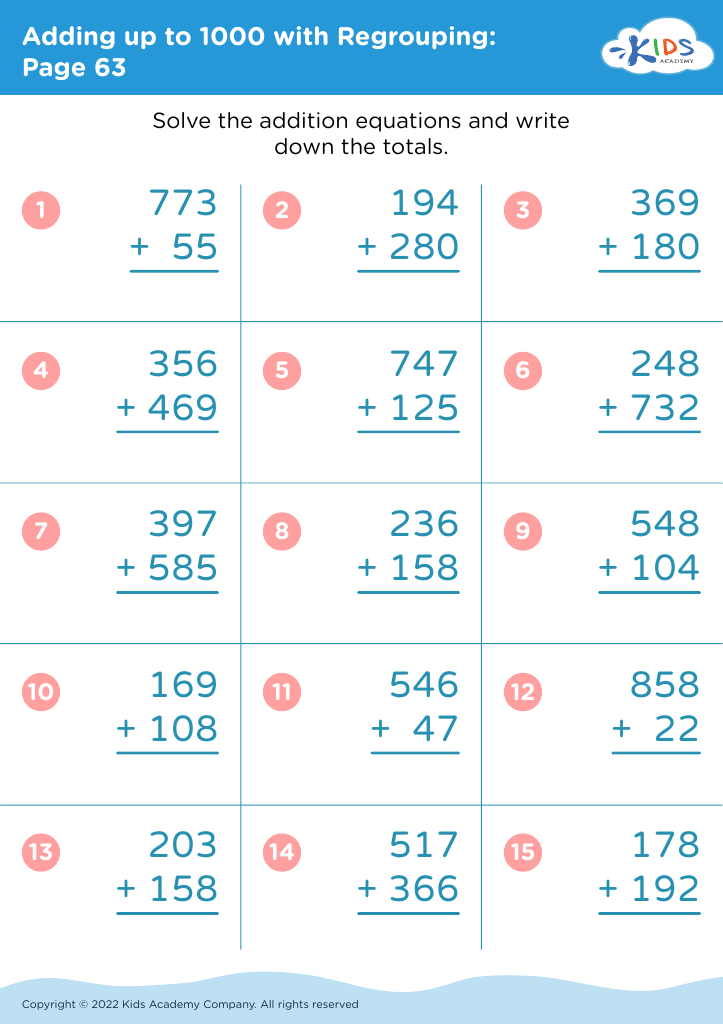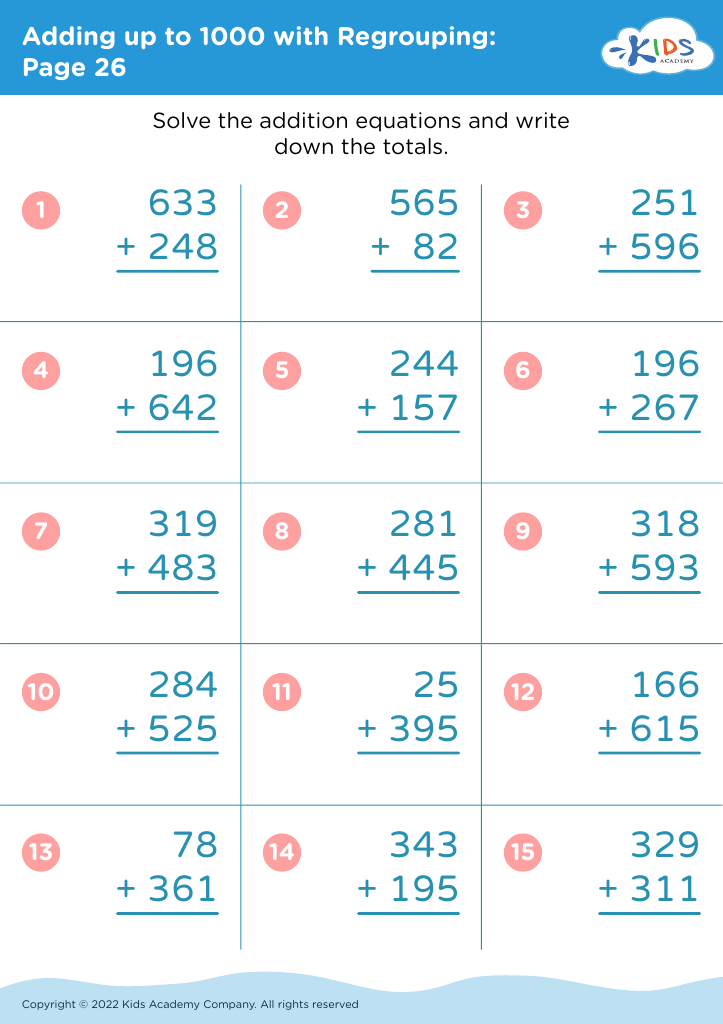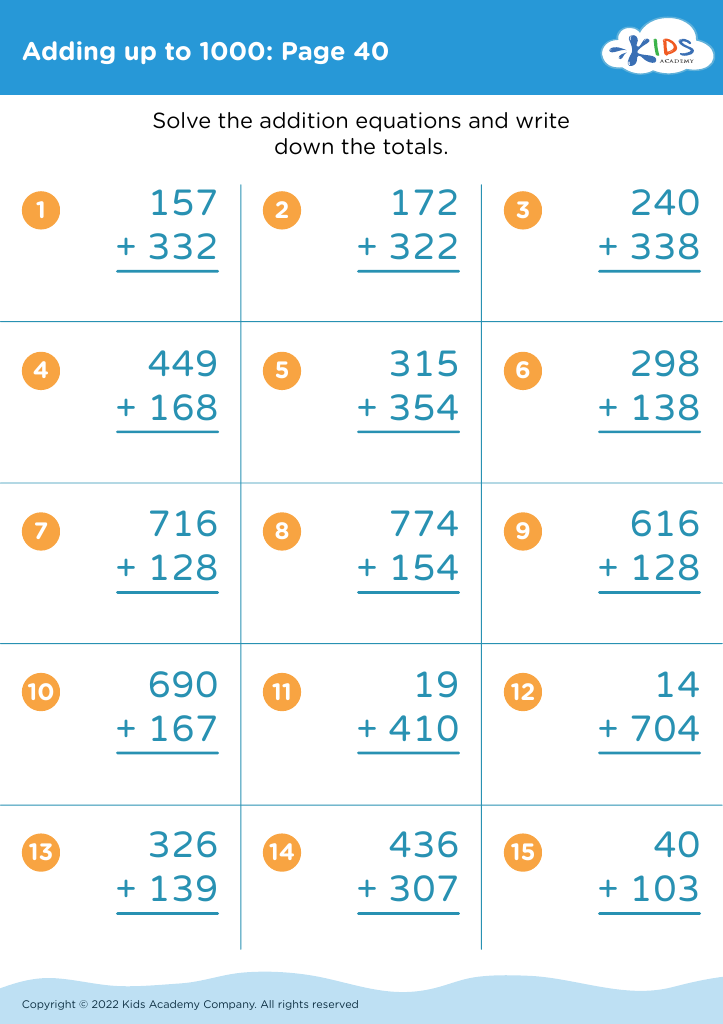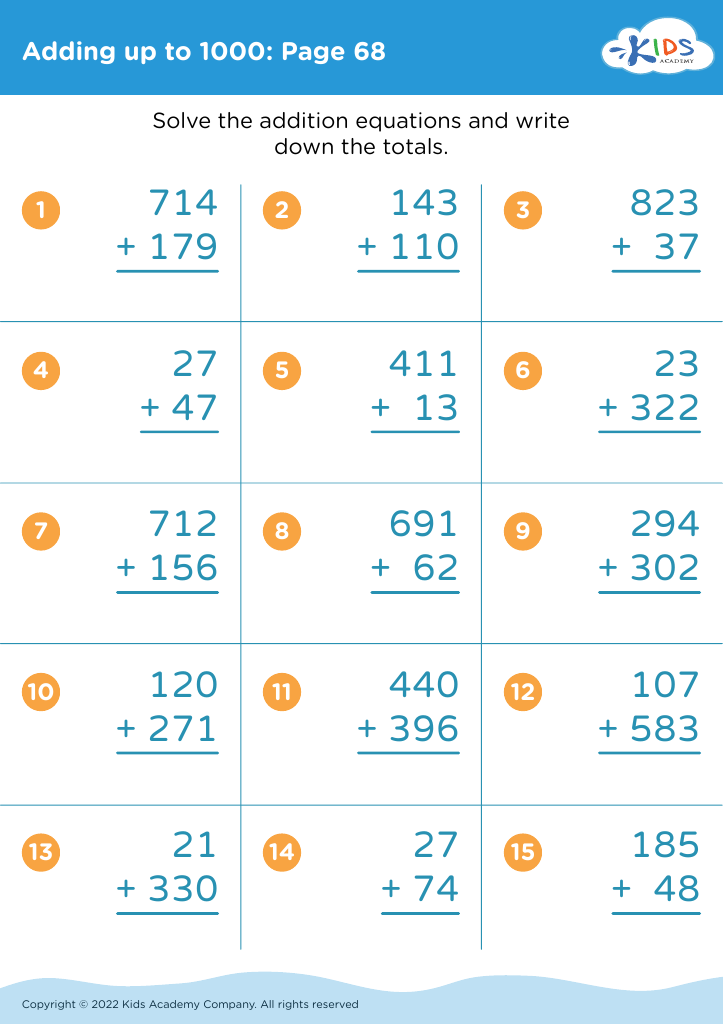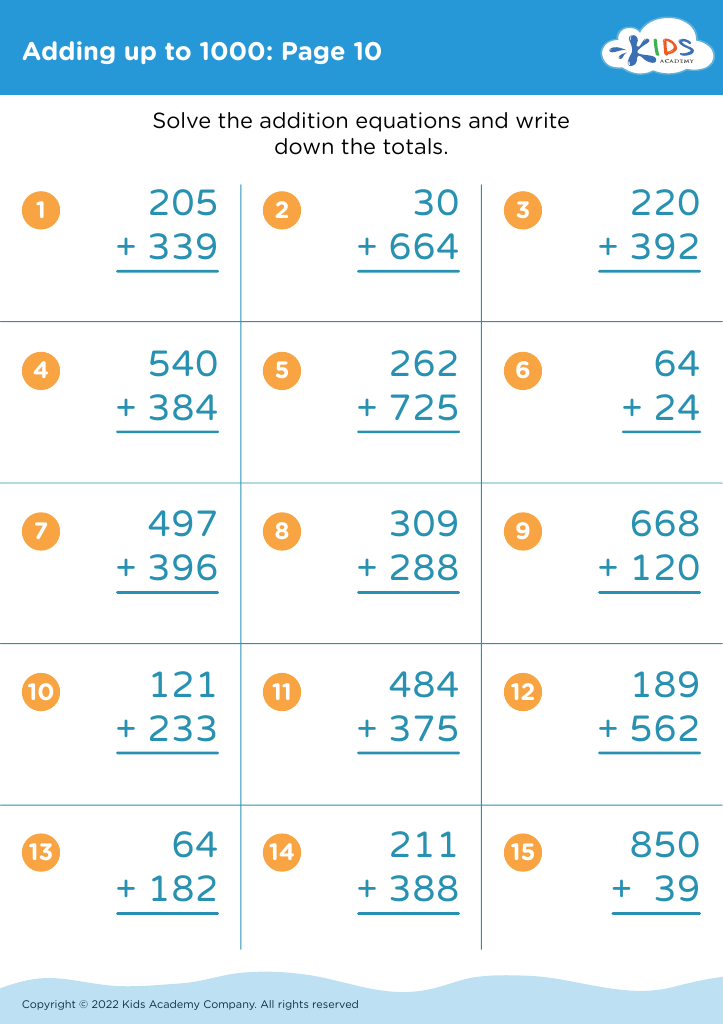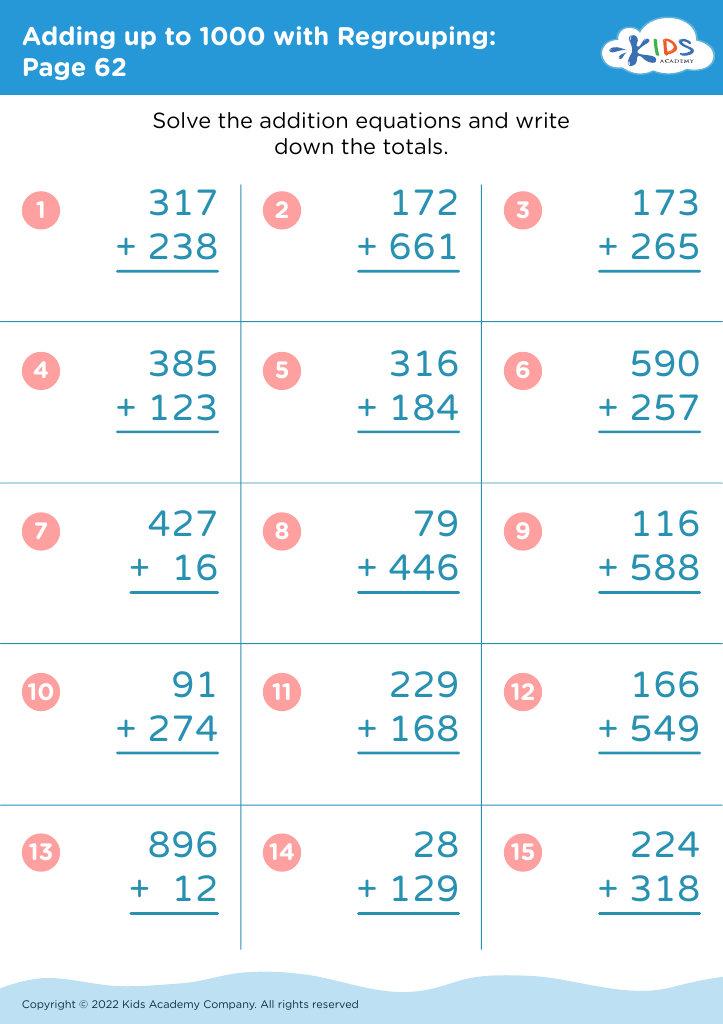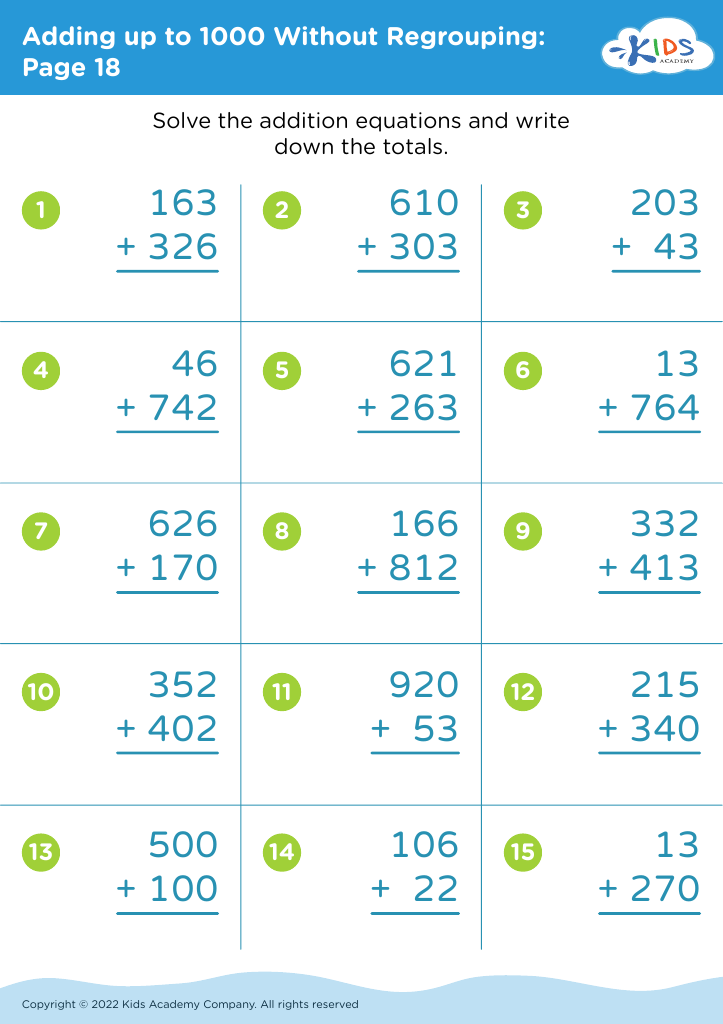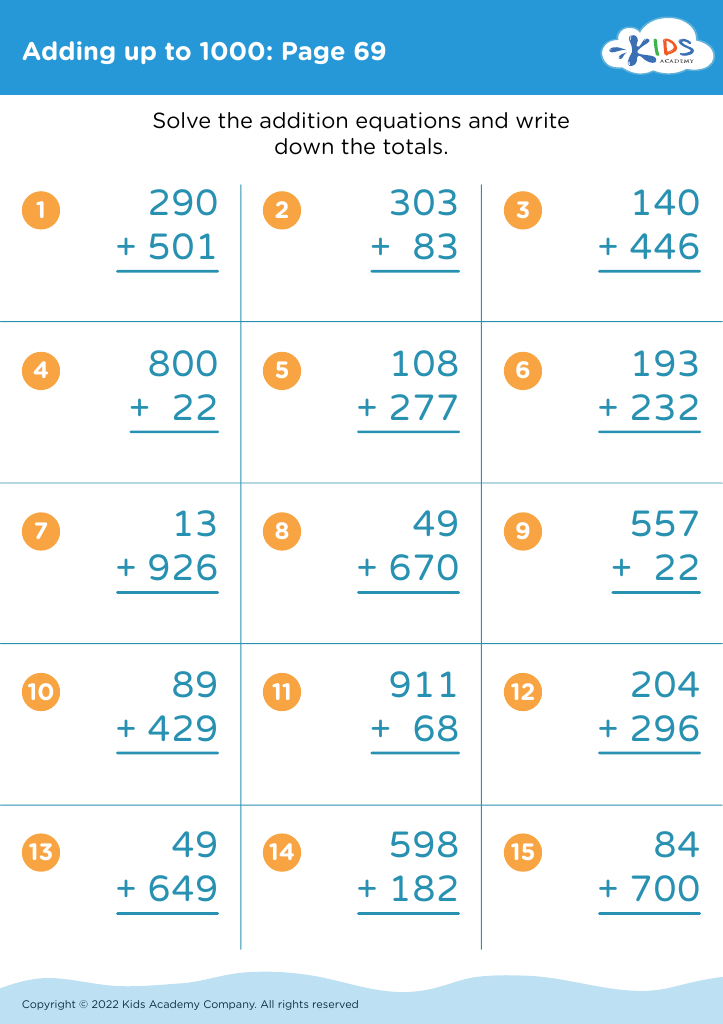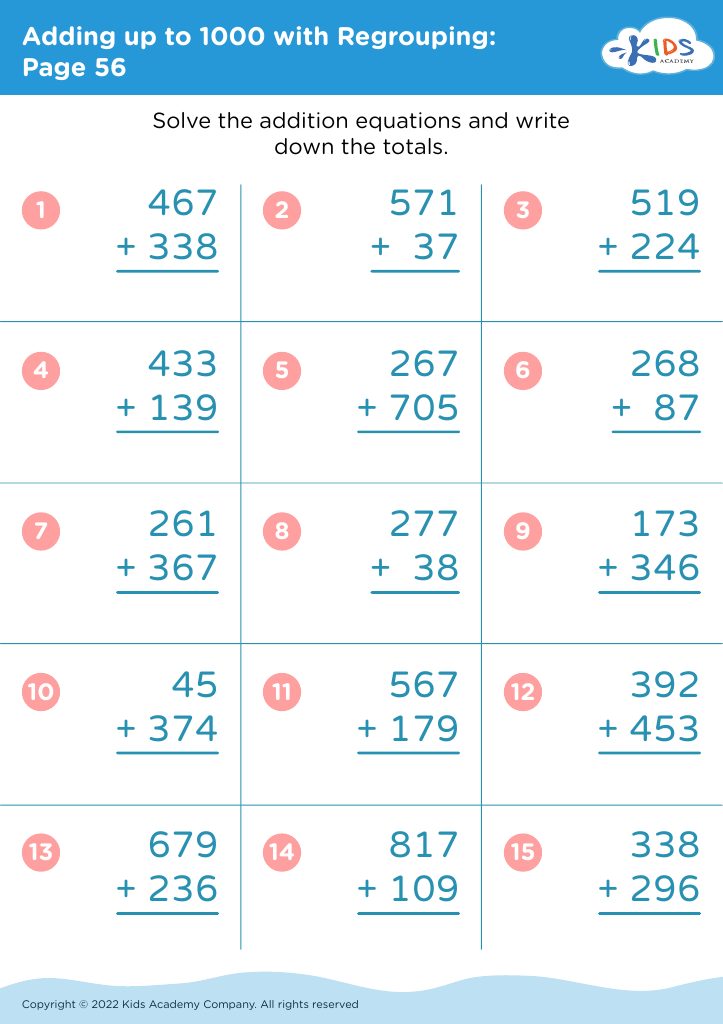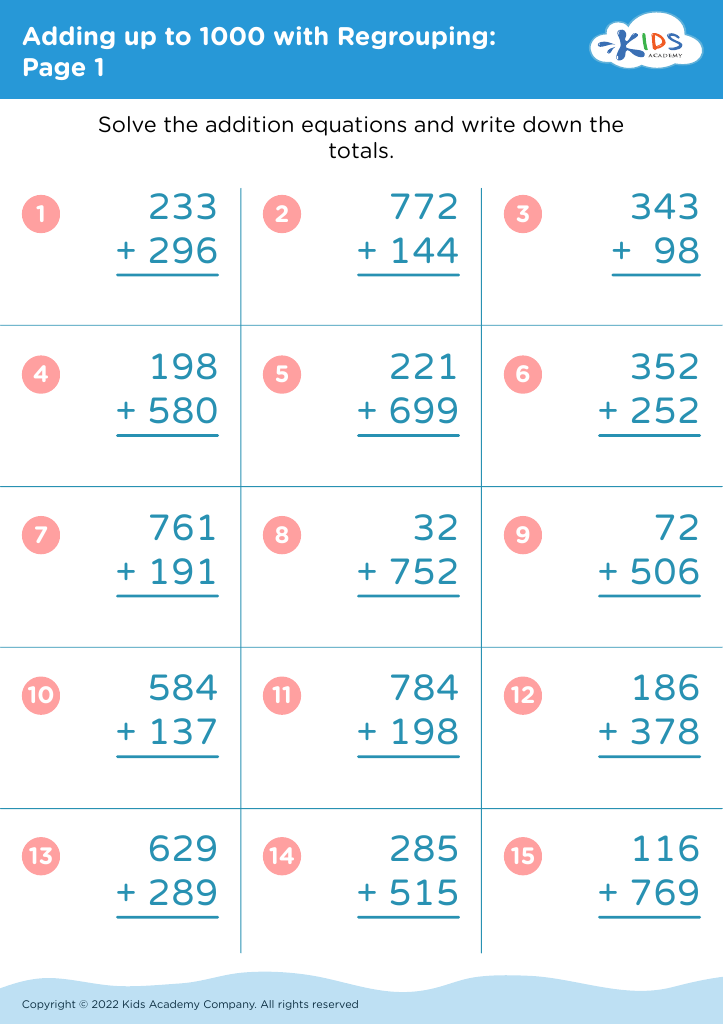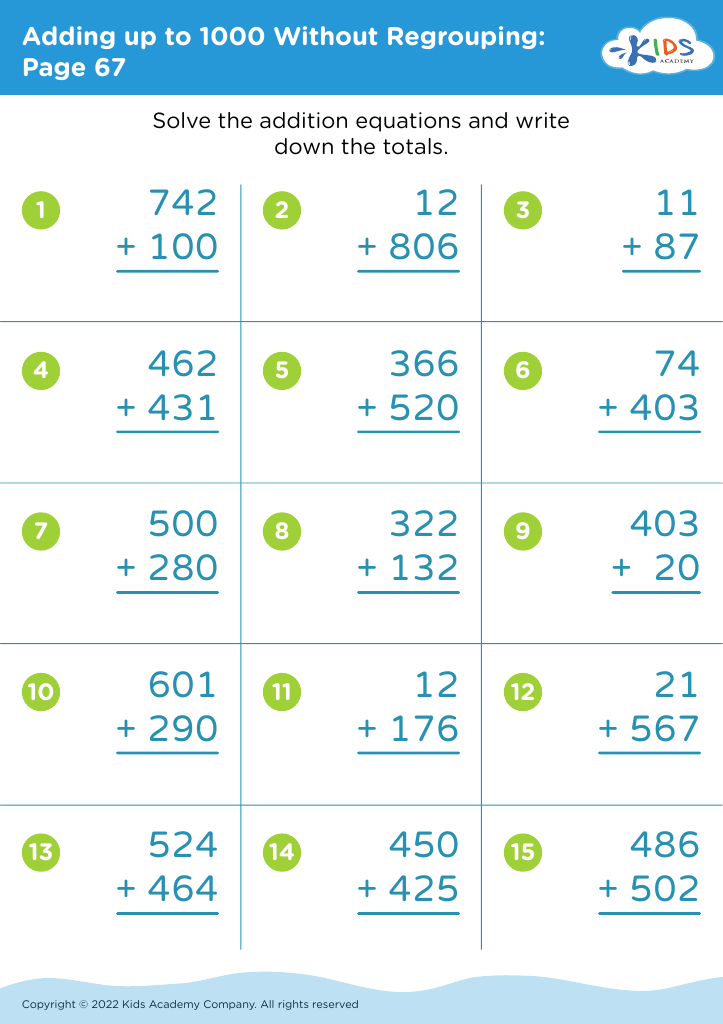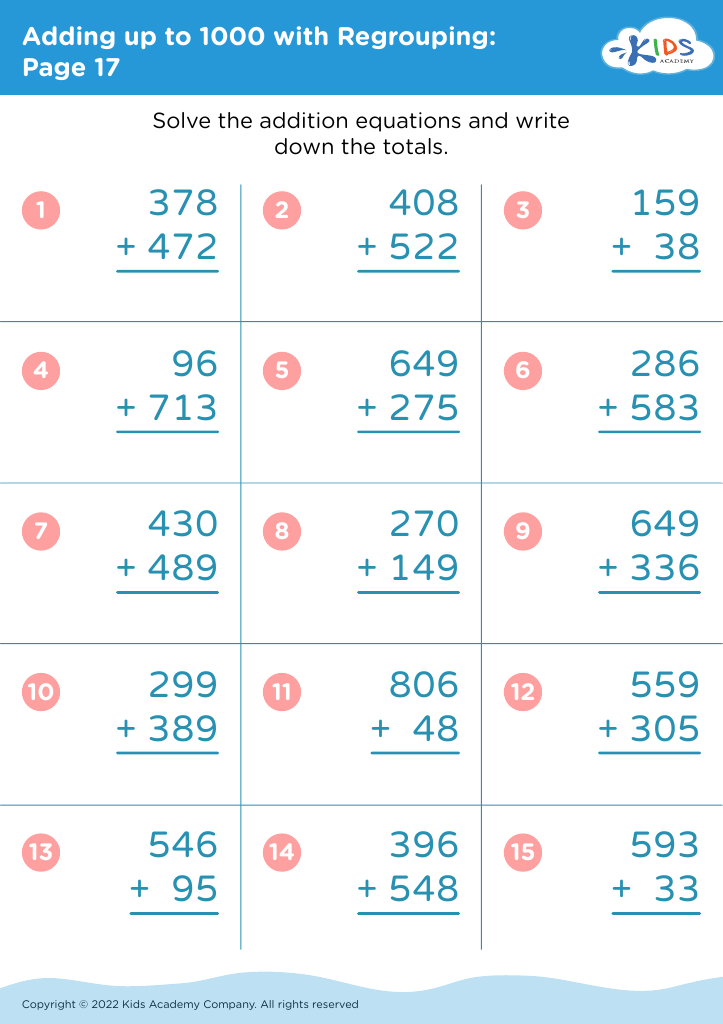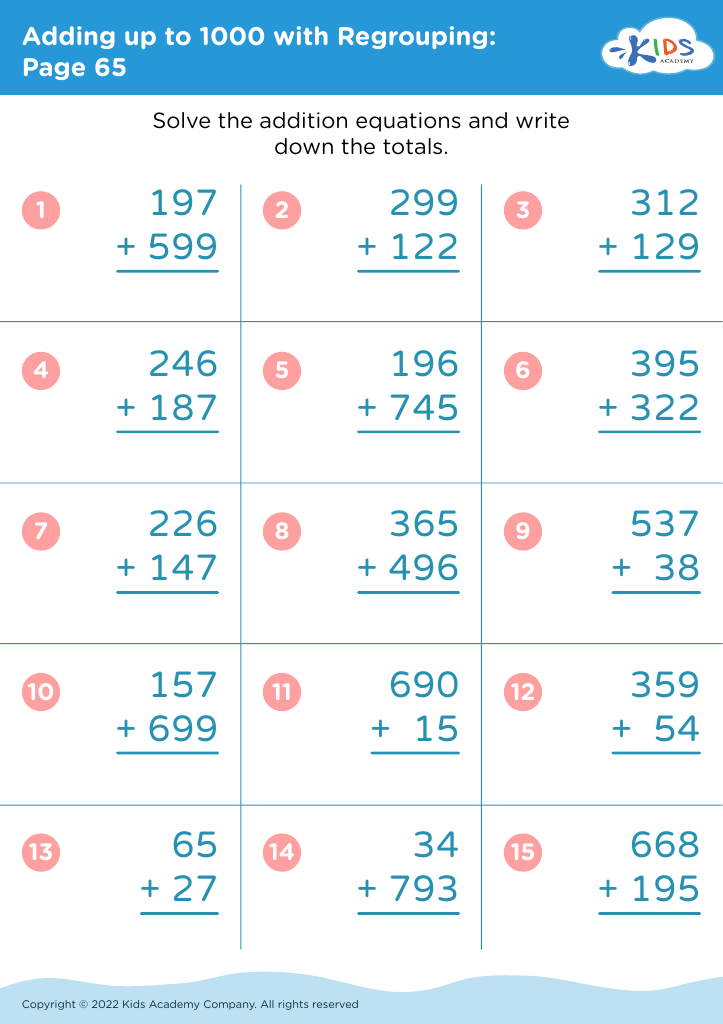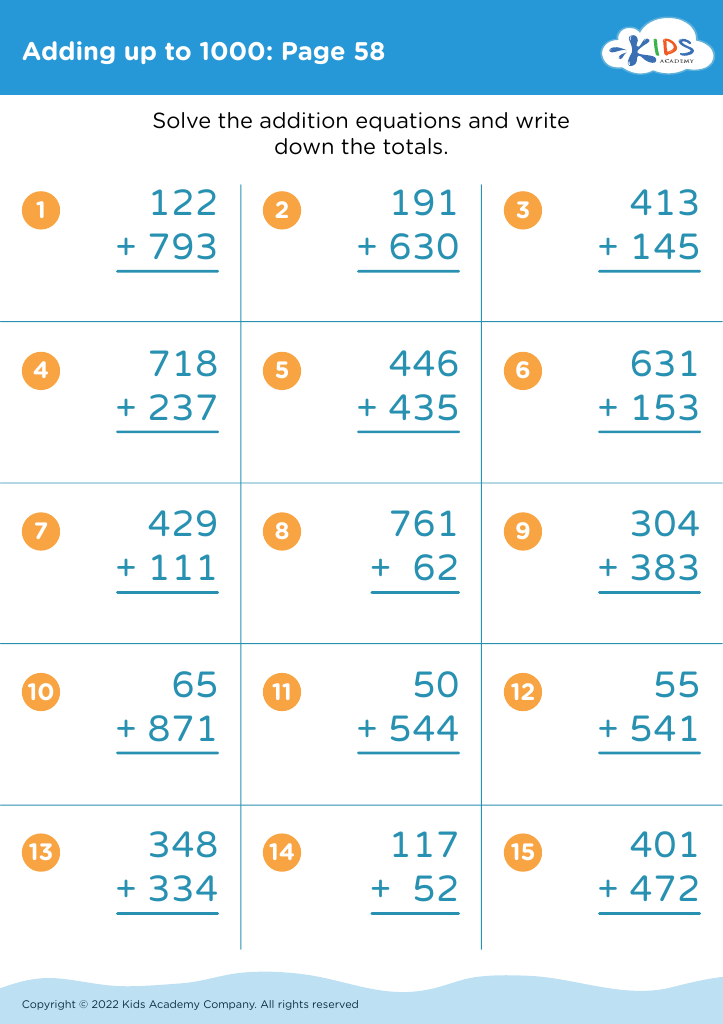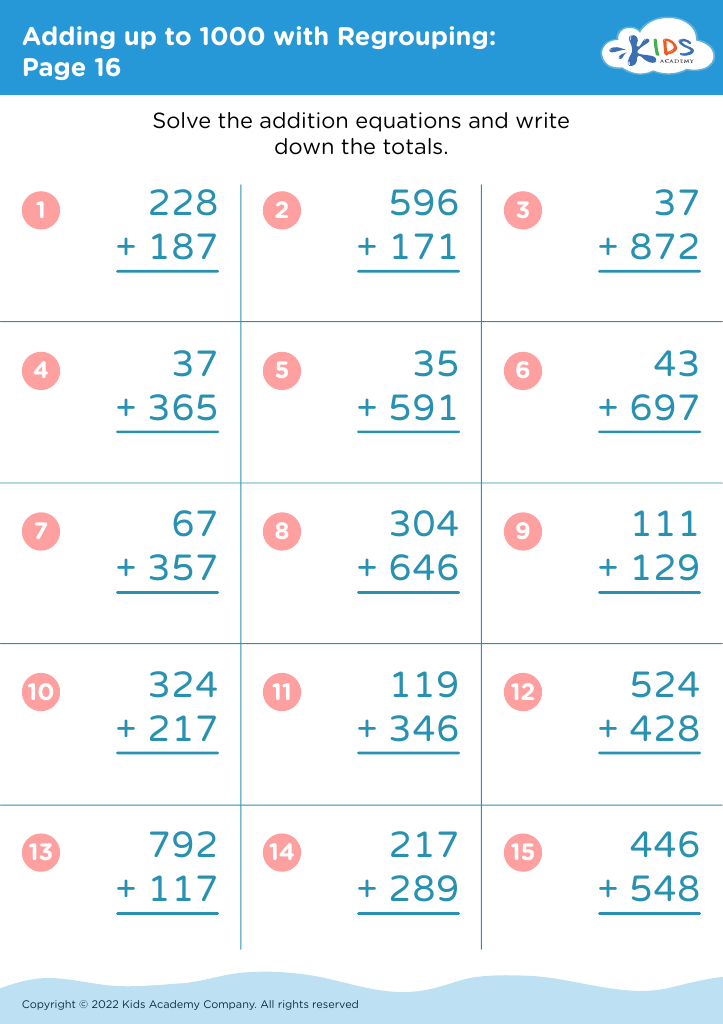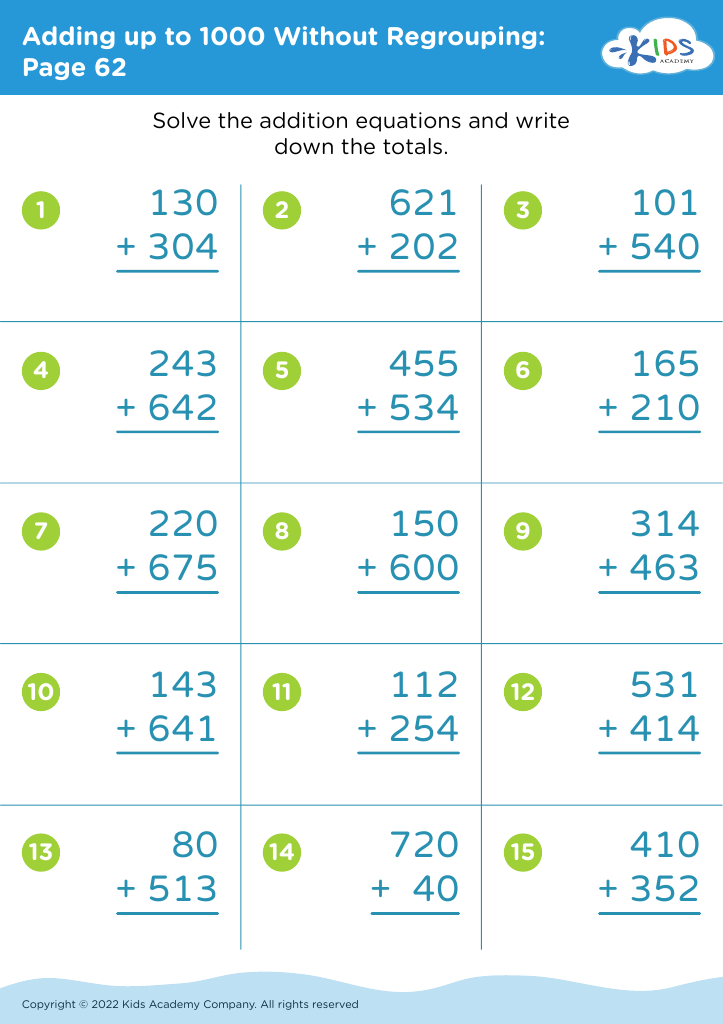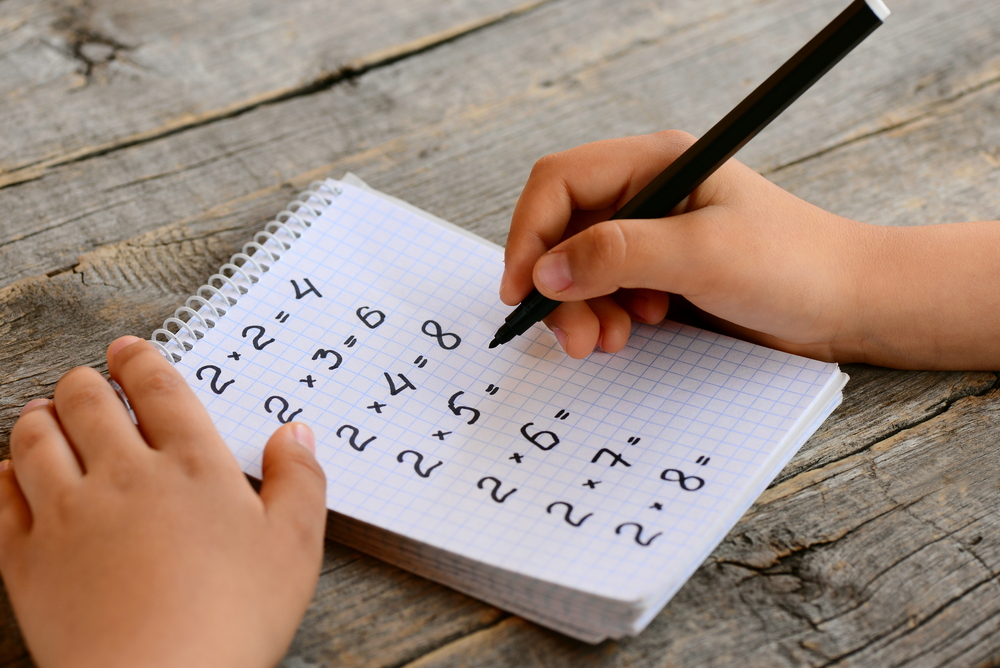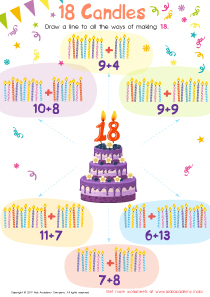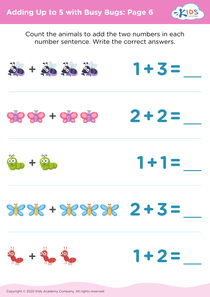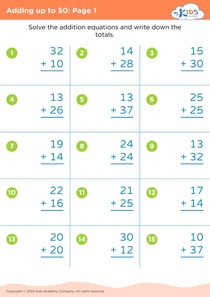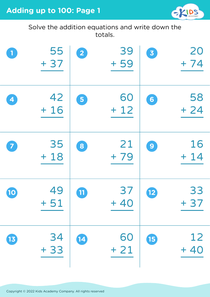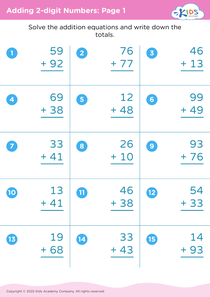Comparing Fractions Adding up to 1000 Worksheets for Ages 5-8
16 filtered results
-
From - To
Discover our engaging "Comparing Fractions Adding up to 1000 Worksheets" specifically designed for children aged 5-8. These printable resources offer a fun and interactive way to help young learners develop their fraction comparison skills while engaging with numbers that total up to 1000. Each worksheet encourages critical thinking, fostering a solid understanding of fractions through hands-on practice. With colorful illustrations and grade-appropriate exercises, these worksheets make learning enjoyable and accessible. Perfect for both classroom use and home practice, these activities are an essential tool for mastering foundational math skills. Start your child's journey to confidence in math today!
Understanding fractions is foundational for early mathematics learning. For children aged 5-8, comparing fractions, particularly those that add up to 1000, introduces critical skills such as portioning, reasoning, and problem-solving. When parents and teachers engage with children on this topic, they foster a deeper understanding of numerical relationships and equip them with tools to evaluate quantitative situations effectively.
By comparing fractions and involving large sums like 1000, children practice breaking numbers into parts and recognizing equivalent forms, which forms the backbone of more advanced math. It helps them visualize concepts such as wholes, parts, and their relationships. This is especially crucial in everyday scenarios, such as sharing food or dividing items among friends.
Moreover, teaching kids to compare fractions aids their ability in critical thinking. It challenges them to think about how numbers interact, creating a genuine interest in math as a dynamic subject rather than mere calculations. Such foundational skills will serve them well as they progress in their education, making it vital for parents and educators to support and nurture these concepts through games, discussions, and practical activities. Cultivating these understandings now can spark a lifelong appreciation for mathematics.
